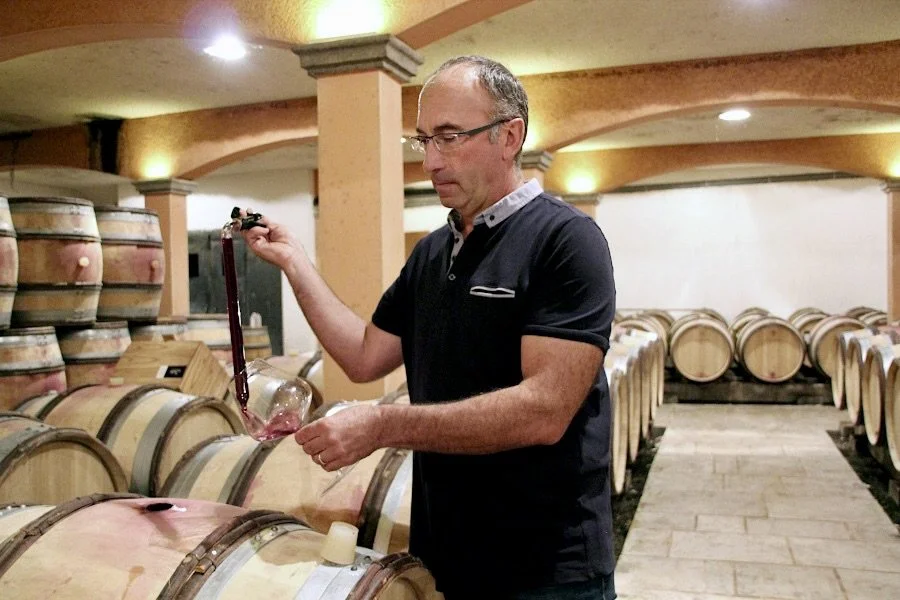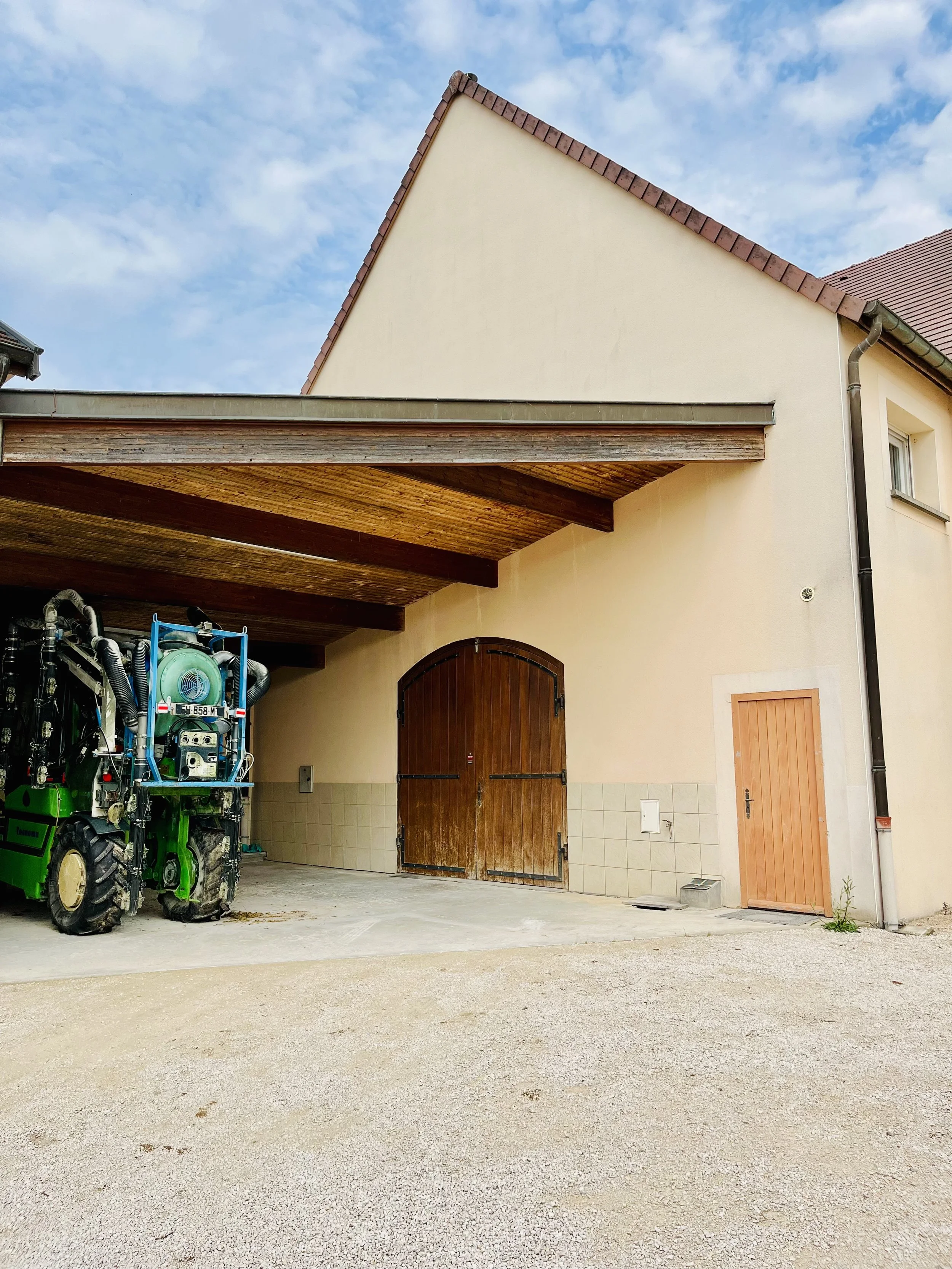
Jean-Pierre Guyon
Vosne-Romanée
Meet the producer
Jean-Pierre Guyon founded his estate in 1987. Spanning 6 hectares, the vineyard is primarily situated in the prestigious Côte de Nuits, with additional plots in the Côte de Beaune.
Jean-Pierre comes from a family of winemakers with deep roots in Vosne-Romanée, extending back four generations.
He established his own estate by acquiring esteemed grand cru parcels, including Échézeaux and Clos-de-Vougeot, along with premier cru vineyards in Vosne-Romanée.
The estate features a diverse range of terroirs, showcasing old vines aged between 60 to 70 years, cultivated through mass selection.
Dedicated to organic practices since the 2000s, Jean-Pierre officially began his conversion in 2009, achieving the Ecocert label in 2012.
Renowned for its exceptional quality, Domaine Jean-Pierre Guyon is often regarded as one of the top producers in Vosne-Romanée, attracting the attention of wine enthusiasts from around the globe.
The Estate’s philosophy
Familiar with organic and respectful vineyard practices, they nurture and guide the vines toward greater autonomy each year. They support and encourage the vines, strengthening their natural defences while preserving the environment. Anticipation is essential; they protect the vineyard by applying preventive measures that reduce wood diseases, pest impacts, and fungal attacks. These measures include pruning close to bud break, respecting sap flow, working the soil surface, bud thinning, leaf removal, and tying the foliage to allow air and light circulation while limiting vegetation congestion.
All interventions follow lunar cycles, based on their belief in the moon’s influence on plants. They act on the vines or their environment depending on the days designated for fruits, flowers, roots, or leaves.
From May to July, the soil is scratched and the grass mowed, though the grass is left to grow for the rest of the year. Since 2015, the Guyot-Poussard pruning method has been practised, preventing black wood and esca, two unfortunately common diseases. Yields average around 40 hl/ha across the estate, with a favourite parcel in Chorey-lès-Beaune producing just 30 to 35 hl/ha (depending on the vintage).
Since 2019, the vines have no longer trimmed but instead their foliage is braided to form a canopy. This protects the vines from heat and yields airy clusters with superior ripeness.
During the harvest, about fifty workers are recruited, with thirty dedicated to sorting, ensuring only the healthiest grapes are selected. Since 2019, all grape clusters are stripped of their stems to vinify with whole berries; it the berry is smaller, and Jean Pierre named it as “a small cloud”. The peduncle is carefully cut with scissors right at the grape.
Winemaking and Ageing Process
They take great care to reveal the unique terroirs during the wine production process. Depending on the cuvées, Chardonnay or Pinot Blanc grapes are pressed immediately after harvest.
The Chardonnay grapes give rise to cuvées such as Coteaux Bourguignons, Savigny-les-Beaune, and Morey-Saint-Denis La Bidaude. Meanwhile, Nuits-Saint-Georges Les Argillats is made from the Pinot Blanc, also known as Pinot "Gouges" or Albino Pinot Noir, a mutation discovered by Henri Gouges in one of his plots during the 1930s and 1940s.
Once the grapes are pressed, the must is transferred to barrels after a brief stay in a tank to allow impurities to settle. Alcoholic fermentation begins in oak barrels of 228 liters at low temperatures to enhance the expression of fresh fruit. This fermentation process lasts several months, influenced by the temperature variations between autumn and winter. It is in the spring, as the cellar warms, that alcoholic fermentation concludes and malolactic fermentation begins. As the barrels settle, the wine spends additional months absorbing the woody cocoon, enriching itself with spicy and toasted aromas. A fining and filtration process completes the wine before bottling, which also considers the lunar calendar.
Familiar with organic and respectful vineyard practices, they nurture and guide the vines toward greater autonomy each year. They support and encourage the vines, strengthening their natural defences while preserving the environment. Anticipation is essential; they protect the vineyard by applying preventive measures that reduce wood diseases, pest impacts, and fungal attacks. These measures include pruning close to bud break, respecting sap flow, working the soil surface, bud thinning, leaf removal, and tying the foliage to allow air and light circulation while limiting vegetation congestion.
All interventions follow lunar cycles, based on their belief in the moon’s influence on plants. They act on the vines or their environment depending on the days designated for fruits, flowers, roots, or leaves.
From May to July, the soil is scratched and the grass mowed, though the grass is left to grow for the rest of the year. Since 2015, the Guyot-Poussard pruning method has been practised, preventing black wood and esca, two unfortunately common diseases. Yields average around 40 hl/ha across the estate, with a favourite parcel in Chorey-lès-Beaune producing just 30 to 35 hl/ha (depending on the vintage).
Since 2019, the vines have no longer trimmed but instead their foliage is braided to form a canopy. This protects the vines from heat and yields airy clusters with superior ripeness.
During the harvest, about fifty workers are recruited, with thirty dedicated to sorting, ensuring only the healthiest grapes are selected. Since 2019, all grape clusters are stripped of their stems to vinify with whole berries; it the berry is smaller, and Jean Pierre named it as “a small cloud”. The peduncle is carefully cut with scissors right at the grape.
Key information
-
The estate is located in Vosne-Romanée.
-
Pinot Noir, Pinot Blanc, Aligoté, Chardonnay
-
Around 6 hectares
-
Organic and biodynamic practices.





